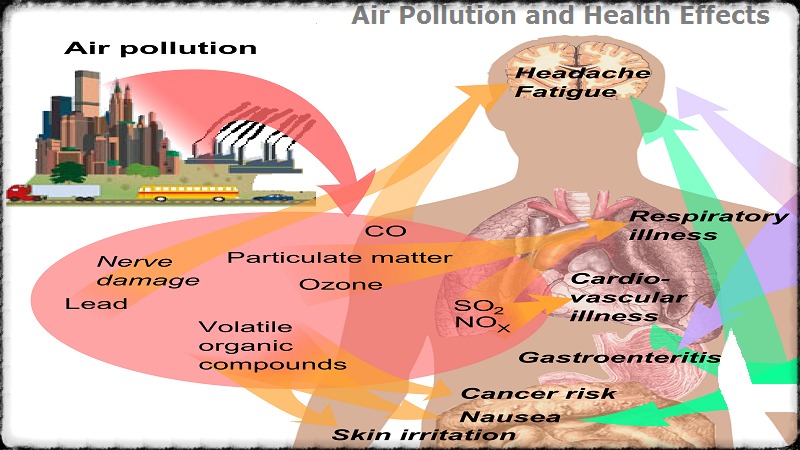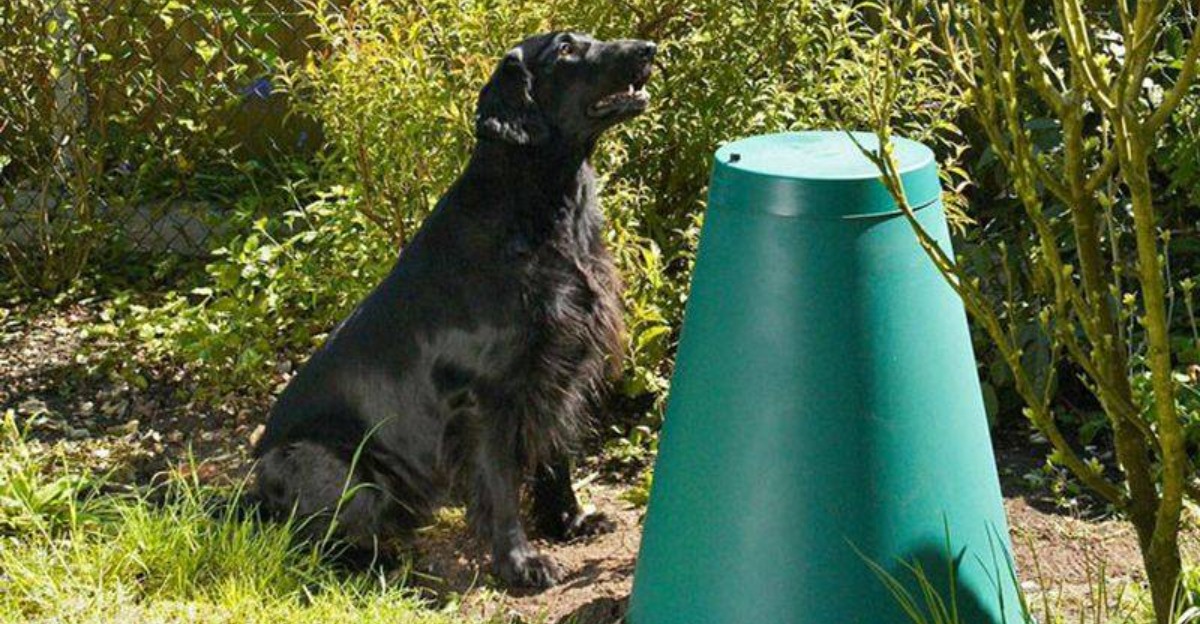
The impact of indoor air quality and pollution in cities on pet respiratory health
Urban air pollution affects not only humans but also pets, who spend most of their lives indoors, inhaling dust, smoke, fumes, and chemical toxins. Poor indoor air quality can lead to asthma, bronchitis, allergies, and chronic respiratory damage in dogs, cats, birds, and small mammals, making it essential for pet owners to understand risks and take preventive measures for healthier animal companions.
🐶 Pet Star
59 min read · 10, Oct 2025

Introduction: The Hidden Danger Lurking Indoors
When we think about air pollution, we often imagine smoky skies, factory emissions, and vehicle exhaust. However, for millions of pets living in cities, the biggest threat isn’t just outside — it’s inside their homes. Indoor air can be two to five times more polluted than outdoor air, according to the U.S. Environmental Protection Agency (EPA). For pets, whose respiratory systems are more sensitive than humans’, prolonged exposure to these pollutants can lead to serious respiratory illnesses, allergies, and even reduced lifespan.
Dogs, cats, and small mammals spend most of their lives indoors, often at floor level — closer to dust, fumes, and cleaning chemicals. Birds, on the other hand, have highly efficient respiratory systems that make them especially vulnerable to airborne toxins. The modern urban lifestyle, filled with synthetic materials, aerosol sprays, and limited ventilation, can silently harm our animal companions.
1. Understanding Indoor Air Pollution and Its Sources
Indoor air pollution refers to the contamination of indoor environments by various chemical, physical, and biological agents. In urban homes, these sources are widespread and often overlooked. Some of the main culprits include:
- Tobacco smoke: Secondhand smoke is one of the most common indoor air pollutants. Pets exposed to cigarette smoke can develop bronchitis, nasal tumors, and asthma-like symptoms. Cats are particularly at risk since they groom themselves, ingesting smoke residues from their fur.
- Volatile Organic Compounds (VOCs): Found in paints, furniture, cleaning sprays, and air fresheners, VOCs release toxic gases that can irritate the respiratory tract and cause long-term damage.
- Cooking fumes: The use of gas stoves, especially in poorly ventilated kitchens, emits nitrogen dioxide and carbon monoxide — both harmful to pets’ lungs.
- Mold and dust mites: Common in humid environments, these biological pollutants trigger allergic reactions and chronic coughs in both pets and humans.
- Scented candles and incense: Although pleasant for humans, the smoke and synthetic fragrances can cause breathing problems, especially in birds.
While we may open windows to “air out” our homes, in cities, the outdoor air is often polluted as well, adding to the problem rather than solving it.
2. Urban Outdoor Pollution and Its Indoor Consequences
City dwellers are exposed to high concentrations of particulate matter (PM2.5 and PM10), nitrogen oxides (NOx), ozone, and sulfur dioxide. These pollutants seep into apartments through windows, doors, and ventilation systems. Once inside, they mix with indoor pollutants, forming a toxic cocktail of irritants.
a. The Role of Particulate Matter
Particulate matter (PM) — tiny particles from car exhausts, construction dust, and industrial emissions — can deeply penetrate the lungs.
- In dogs, PM exposure causes coughing, wheezing, and inflammation of the bronchi.
- Cats exposed to high levels of air pollution have shown increased risks of asthma and reduced lung function.
- Birds may develop air sacculitis, a severe condition affecting their air sacs, often leading to difficulty in breathing or sudden death.
b. Ozone and Nitrogen Dioxide
Ozone, formed by the reaction of sunlight with pollutants, irritates respiratory tissues. Nitrogen dioxide (NO₂), a byproduct of vehicle emissions and gas stoves, can cause chronic bronchitis. Pets that live near busy roads or in poorly ventilated apartments may experience persistent respiratory stress.
c. Indoor-Outdoor Interactions
In modern high-rise apartments, the line between indoor and outdoor air quality has blurred. Central air conditioning systems often recirculate polluted outdoor air, exposing pets to constant low-level contamination.
3. The Science of Pet Respiratory Systems: Why They’re So Sensitive
Pets breathe faster than humans and have smaller, more delicate airways. For example:
- A dog breathes 15–30 times per minute.
- A cat breathes 20–30 times per minute.
- A parakeet breathes up to 60 times per minute.
This high respiratory rate means they inhale more pollutants relative to their body weight. Moreover, unlike humans, pets spend more time indoors, often close to floors where heavier pollutants settle — such as lead dust, cleaning residues, or smoke particles.
Birds possess air sacs that allow for efficient oxygen exchange, but these same sacs also make them extremely vulnerable — toxins enter quickly and linger longer. For small mammals like hamsters and rabbits, confined cage environments amplify the impact of poor ventilation and accumulated dust.
4. Common Respiratory Diseases in Pets Linked to Air Pollution
Exposure to polluted indoor and outdoor air can trigger various respiratory conditions in pets:
- Chronic Bronchitis: Common in dogs exposed to long-term smoke or dust. Symptoms include persistent coughing and wheezing.
- Feline Asthma: A condition seen in urban cats, often triggered by cigarette smoke, aerosols, or mold spores.
- Allergic Rhinitis: Characterized by sneezing, nasal discharge, and itching, particularly in dogs and cats.
- Pneumonitis and Air Sacculitis: Common in birds exposed to chemical fumes or aerosol sprays.
- Reduced Immunity: Prolonged exposure to toxins can weaken pets’ immune systems, making them more susceptible to infections.
A 2023 veterinary study found that pets living in high-traffic urban areas had a 40% higher rate of respiratory illnesses compared to those in suburban or rural regions.
5. Long-Term Effects of Poor Air Quality
The effects of air pollution on pets are often chronic and cumulative. Over time, even low-level exposure can lead to:
- Inflammation and scarring of lung tissue
- Decreased lung capacity and stamina
- Increased risk of heart disease due to chronic oxygen deprivation
- Premature aging and reduced lifespan
Moreover, pollutants can adhere to fur and be ingested during grooming, leading to additional internal toxicity. The cumulative burden affects not just respiratory function but also the overall quality of life of pets.
6. Preventive Measures: Protecting Pets from Polluted Air
While it’s impossible to completely eliminate pollution, pet owners can take several preventive actions to safeguard their animals:
a. Improve Indoor Air Circulation
- Open windows during early mornings or late nights when pollution is lower.
- Use HEPA air purifiers in rooms where pets spend the most time.
- Regularly clean air conditioner filters and ducts.
b. Avoid Toxic Household Products
- Choose pet-safe cleaning supplies that are free of ammonia, chlorine, and synthetic fragrances.
- Avoid smoking indoors or near pets.
- Limit use of incense, candles, and aerosol sprays.
c. Regular Grooming and Cleaning
- Vacuum frequently using HEPA filters to reduce dust, dander, and pollen.
- Bathe and brush pets regularly to minimize allergen buildup.
d. Green Indoor Spaces
Houseplants like peace lilies, spider plants, and Boston ferns help filter indoor air naturally. However, ensure they’re non-toxic to pets.
e. Veterinary Monitoring
- Schedule routine vet checkups, especially if your pet coughs, wheezes, or seems fatigued.
- Ask your vet about air-quality-sensitive breeds — for instance, flat-faced (brachycephalic) dogs like pugs and bulldogs are more vulnerable.
f. Limit Outdoor Activity on High Pollution Days
- Use apps that track Air Quality Index (AQI) to determine when it’s safe to walk pets.
- Avoid outdoor exercise during traffic peak hours or smog alerts.
7. Case Studies and Research Insights
Case Study 1: Cats in Urban Apartments
A 2021 study in Tokyo found that cats exposed to heavy indoor smoking households had double the rate of feline asthma compared to non-smoking homes. Postmortem findings revealed tar accumulation in the nasal cavity and lungs.
Case Study 2: Dogs Near Highways
Dogs living within 500 meters of busy roads in Delhi were found to have higher levels of inflammatory markers and increased coughing frequency, similar to children living in the same area.
Case Study 3: Birds in Polluted Environments
In Mexico City, pet birds exposed to ozone and PM2.5 developed chronic air sac infections. Vets reported that these birds exhibited reduced singing behavior and lethargy — early signs of respiratory distress.
8. Future Outlook: Technology and Awareness
As pet ownership rises globally, especially in urban environments, air quality awareness among pet parents is growing.
Emerging solutions include:
- Smart air quality monitors that track indoor pollution in real time.
- Pet wearables capable of monitoring respiratory rates and environmental exposure.
- Eco-friendly building materials and ventilation-focused home design to minimize toxic emissions.
The next wave of smart homes will not only focus on human comfort but also create healthier ecosystems for companion animals.
In today’s rapidly urbanizing world, air pollution has emerged as one of the most pressing public health concerns — not just for humans but also for their animal companions. While pet owners may believe that keeping their dogs, cats, or birds indoors protects them from smog-filled city streets, the reality is far more concerning. Indoor air quality, especially in urban homes and apartments, is often two to five times worse than outdoor air, according to studies by environmental agencies. This hidden menace silently impacts pets’ respiratory systems, leading to allergies, asthma, chronic bronchitis, and even long-term lung damage. Pets are particularly vulnerable because they breathe faster, have smaller lungs, and spend most of their time indoors at ground level, where heavier pollutants like dust, smoke particles, and chemical residues accumulate. The major sources of indoor pollution include cigarette smoke, cooking fumes, volatile organic compounds (VOCs) from cleaning sprays and paints, mold, dust mites, and synthetic fragrances from air fresheners or scented candles. Tobacco smoke is one of the worst offenders, releasing thousands of toxins that irritate pets’ airways and settle on their fur, which cats then ingest during grooming. VOCs, commonly found in urban households, emit toxic gases that can trigger respiratory irritation and reduce overall lung function. Similarly, the use of gas stoves in poorly ventilated kitchens produces nitrogen dioxide and carbon monoxide — both harmful to small pets with delicate lungs. Even activities that seem harmless, like lighting incense or using room sprays, can severely impact birds, whose highly efficient but sensitive air sacs absorb airborne chemicals quickly, sometimes fatally.
The situation worsens when we consider that city air itself, laden with particulate matter (PM2.5 and PM10), nitrogen oxides, ozone, and sulfur dioxide, easily seeps indoors through windows, doors, and ventilation systems. Once inside, these outdoor pollutants combine with indoor toxins, creating a dangerous cocktail that pets breathe in daily. Particulate matter, the fine dust from vehicle exhausts and construction sites, can lodge deep within pets’ lungs. Studies show that dogs exposed to high PM levels exhibit symptoms like chronic coughing, wheezing, and inflamed bronchi, while cats often develop asthma or decreased lung function. Birds, with their highly efficient respiratory mechanisms, are even more susceptible — prolonged exposure to PM2.5 can lead to air sacculitis, a severe and often irreversible condition. Ozone and nitrogen dioxide, both common in urban air, further irritate the airways and cause long-term respiratory distress. Modern city apartments, sealed tightly for energy efficiency, often trap these pollutants inside, while central air conditioning systems recirculate them, ensuring constant low-level exposure. Over time, this continuous inhalation of pollutants leads to chronic respiratory inflammation, tissue scarring, and reduced oxygen exchange, undermining the pet’s health in subtle but significant ways.
Understanding why pets are more affected than humans begins with basic respiratory biology. Dogs breathe about 15–30 times per minute, cats around 20–30, and birds as much as 60 times per minute. This higher respiratory rate means they inhale more air — and consequently more pollutants — relative to their body size. Additionally, because pets live closer to the floor, they are constantly exposed to heavier particles that settle downward, including household dust, pollen, and microplastics. Birds’ unique air sac system, designed for efficient oxygen exchange during flight, unfortunately also means that airborne toxins enter quickly and linger longer, making even small traces of fumes dangerous. For small mammals like hamsters or rabbits, who often live in enclosed cages, the combination of poor ventilation and dust buildup can cause serious respiratory distress.
Over time, exposure to polluted air contributes to a range of diseases in pets. Dogs may develop chronic bronchitis, characterized by persistent coughing and mucus buildup. Cats commonly suffer from feline asthma — a condition strongly linked to exposure to cigarette smoke, aerosols, and mold spores. Birds frequently develop pneumonitis or air sacculitis from exposure to household sprays, while both dogs and cats can suffer from allergic rhinitis, marked by sneezing and nasal discharge. Long-term exposure can also suppress immunity, making pets more prone to infections and secondary illnesses. According to veterinary research, pets living in high-traffic urban neighborhoods are up to 40% more likely to develop respiratory problems than those in rural settings. Prolonged exposure doesn’t just damage the lungs — it impacts the heart as well. When pets consistently breathe polluted air, their oxygen levels drop, straining the cardiovascular system and leading to fatigue, decreased stamina, and even heart disease. Over years, such damage can shorten lifespans and reduce the quality of life significantly.
Preventing these problems requires a proactive approach from pet owners. Improving indoor ventilation is crucial — opening windows during early mornings or late evenings, when outdoor pollution is lower, helps refresh the air. Using HEPA air purifiers can filter out fine particles, while regularly cleaning air conditioning vents prevents dust accumulation. Owners should also choose pet-safe cleaning products free from ammonia, bleach, and synthetic scents, as these chemicals release toxic fumes harmful to pets’ lungs. Smoking indoors should be avoided entirely, and air fresheners, incense, or candles should be replaced with natural alternatives or eliminated. Regular cleaning and grooming routines help reduce dust, dander, and allergens, while non-toxic indoor plants like spider plants or Boston ferns can naturally improve air quality. However, not all plants are safe for animals, so selecting pet-friendly options is important. On days when the outdoor Air Quality Index (AQI) is poor, owners should limit outdoor walks or playtime and schedule activities during hours of lower traffic pollution. Regular veterinary checkups are also vital — veterinarians can detect early signs of respiratory distress through physical exams, chest X-rays, or blood tests, allowing for early intervention. Flat-faced breeds like pugs, bulldogs, and Persian cats require special care because their shortened airways make them more prone to breathing problems.
Several studies highlight the serious impact of poor air quality on pets. Research in Tokyo found that cats living in smoking households had double the rate of feline asthma compared to those in smoke-free homes. Another study in Delhi showed that dogs living near highways exhibited elevated inflammatory markers and chronic coughing, similar to respiratory stress observed in children from the same neighborhoods. In Mexico City, bird owners reported lethargy and loss of vocalization among pet parrots and finches — symptoms later linked to prolonged exposure to ozone and particulate pollution. These findings underline a sobering reality: pets serve as silent witnesses to environmental pollution, their health reflecting the unseen dangers inside urban homes.
Fortunately, growing awareness is driving change. New technologies such as smart air quality monitors, pet-friendly air purifiers, and wearable respiratory trackers are helping owners monitor their pets’ health and environment in real time. Urban architecture is slowly embracing eco-friendly materials and designs that promote better ventilation and reduced emissions. As awareness spreads, more pet owners are recognizing that a clean home doesn’t necessarily mean a healthy home — especially if it’s filled with invisible airborne toxins. The way forward lies in conscious living: reducing chemical use, improving ventilation, and treating indoor air as a vital component of pet wellness. Ultimately, pets rely on their owners for everything — including the air they breathe. Ensuring cleaner indoor environments not only prevents respiratory diseases but also enhances their vitality, comfort, and lifespan. In essence, the fight for better air quality is not just a human issue — it’s an act of love and responsibility toward the animals who share our homes and hearts.
In modern urban environments, pets face an increasingly insidious threat that often goes unnoticed by their owners: the impact of poor indoor air quality and pollution on their respiratory health, a problem exacerbated by the unique living conditions of city dwellers and the biological vulnerabilities of companion animals, as dogs, cats, birds, and small mammals spend the vast majority of their time indoors and closer to the ground, where pollutants such as dust, particulate matter, and chemical residues accumulate, and because these animals breathe faster relative to their body size, they inhale disproportionately higher amounts of airborne toxins than humans, with dogs typically taking 15 to 30 breaths per minute, cats 20 to 30, and birds up to 60, making them particularly susceptible to both acute and chronic respiratory distress, which can manifest in a wide spectrum of conditions ranging from mild allergic reactions, sneezing, and nasal discharge to severe chronic bronchitis, asthma, and even permanent lung damage, all of which can compromise their overall health and shorten their lifespan; indoor air pollution in urban apartments and houses often arises from multiple sources, including cigarette smoke, which releases thousands of harmful chemicals that settle on pets’ fur and are ingested during grooming, volatile organic compounds (VOCs) emitted by paints, furniture, cleaning products, and air fresheners, nitrogen dioxide and carbon monoxide from gas stoves, mold and dust mites in damp areas, and even seemingly innocuous substances like scented candles, incense, and aerosol sprays, which produce microscopic particles and fumes capable of irritating sensitive respiratory systems, while outdoor air pollution, including high levels of fine particulate matter (PM2.5 and PM10), ozone, sulfur dioxide, and nitrogen oxides, infiltrates indoor spaces through windows, doors, and ventilation systems, compounding the problem by introducing additional toxins that mix with indoor pollutants to form a toxic environment that pets breathe continuously; studies have shown that animals living in high-traffic urban areas experience higher incidences of coughing, wheezing, reduced lung capacity, and inflammatory conditions compared to those in rural settings, and research on cats in smoking households has revealed doubled rates of asthma compared to smoke-free homes, while dogs residing near busy highways exhibit elevated inflammatory markers and chronic respiratory stress, and birds exposed to urban smog and household fumes develop air sac infections, reduced activity, and impaired vocalization, all of which underscore the vulnerability of these animals to environmental hazards; pets’ biological characteristics further exacerbate their susceptibility, as cats have sensitive bronchial passages and groom themselves frequently, ingesting toxins trapped on their fur, while brachycephalic breeds of dogs, such as pugs and bulldogs, have compressed airways that limit airflow and make even minor exposure to pollutants potentially dangerous, and birds, with their highly efficient air sac systems, absorb airborne chemicals quickly and experience prolonged effects, whereas small mammals like rabbits, guinea pigs, and hamsters often live in confined cages where dust, ammonia from bedding, and poor ventilation can trigger severe respiratory issues; the cumulative effect of prolonged exposure to indoor and outdoor air pollutants includes chronic inflammation of the airways, scarring of lung tissue, reduced oxygen exchange, compromised cardiovascular function due to chronic hypoxia, weakened immune response, increased susceptibility to infections, and diminished overall vitality, which collectively contribute to a lower quality of life and reduced lifespan for urban pets; preventing these negative outcomes requires a multi-faceted approach that includes improving indoor ventilation through the use of HEPA filters and air purifiers, avoiding smoking indoors, selecting non-toxic, fragrance-free cleaning products, limiting the use of aerosol sprays and scented candles, maintaining regular grooming and vacuuming routines to remove settled dust and allergens, introducing pet-safe indoor plants that help naturally filter air, monitoring the Air Quality Index (AQI) to schedule outdoor activities when pollution levels are low, and conducting regular veterinary checkups to detect early signs of respiratory compromise, especially in at-risk breeds or species; emerging technologies, such as smart air quality monitors, wearable devices that track pets’ respiratory rates, and eco-friendly building designs with improved ventilation, offer promising solutions to minimize exposure and improve overall health, while growing awareness among urban pet owners is critical to ensuring that pets receive adequate protection from environmental hazards; the science is clear that pets cannot escape the effects of urban air pollution simply by staying indoors, as pollutants infiltrate homes and apartments, combine with indoor toxins, and interact with pets’ sensitive respiratory systems to produce both immediate and long-term health effects, highlighting the need for conscious, preventive measures to reduce exposure, mitigate risks, and enhance the quality of life of animals who are entirely dependent on humans for their wellbeing, making indoor air quality a crucial aspect of responsible pet ownership in cities around the world.
Conclusion
The connection between air quality and pet respiratory health is undeniable. As cities continue to expand and air pollution levels rise, it’s crucial for pet owners to understand that a healthy indoor environment is just as important for pets as it is for humans. Cleaner air means fewer illnesses, happier pets, and a longer, healthier life for our beloved companions. Ultimately, protecting pet health begins with cleaner air — both indoors and out.
Q&A Section
Q1: How does indoor air pollution affect pets differently than humans?
Ans: Pets breathe faster and are closer to the ground, where pollutants settle. Their smaller airways and higher respiratory rates make them more vulnerable to dust, smoke, and chemicals than humans.
Q2: Which pets are most at risk from poor air quality?
Ans: Birds (due to their sensitive air sacs), cats (prone to asthma), and flat-faced dog breeds like pugs and bulldogs are most at risk.
Q3: Can air purifiers really help pets?
Ans: Yes. HEPA air purifiers effectively remove dust, pet dander, and fine particles, improving both human and pet respiratory health.
Q4: What are early signs of respiratory distress in pets?
Ans: Coughing, wheezing, shortness of breath, nasal discharge, fatigue, and decreased activity are common indicators.
Q5: Are scented candles or air fresheners safe for pets?
Ans: Most contain synthetic fragrances and chemicals that can irritate the lungs, especially in cats and birds. It’s best to avoid them or use natural alternatives.
Similar Articles
Find more relatable content in similar Articles

Composting Pet Waste: A Greener Way to Clean Up...
As pet ownership continues to .. Read More

Social Media for Pets: Turning Your Pet into a Digital..
From playful puppies to charis.. Read More

Pets and Mental Health: The Science Behind Emotional H..
Discover the profound impact o.. Read More

Virtual Vet Visits: Are Online Consultations Reliable?..
As pet healthcare embraces dig.. Read More
Explore Other Categories
© 2024 Copyrights by rPets. All Rights Reserved.